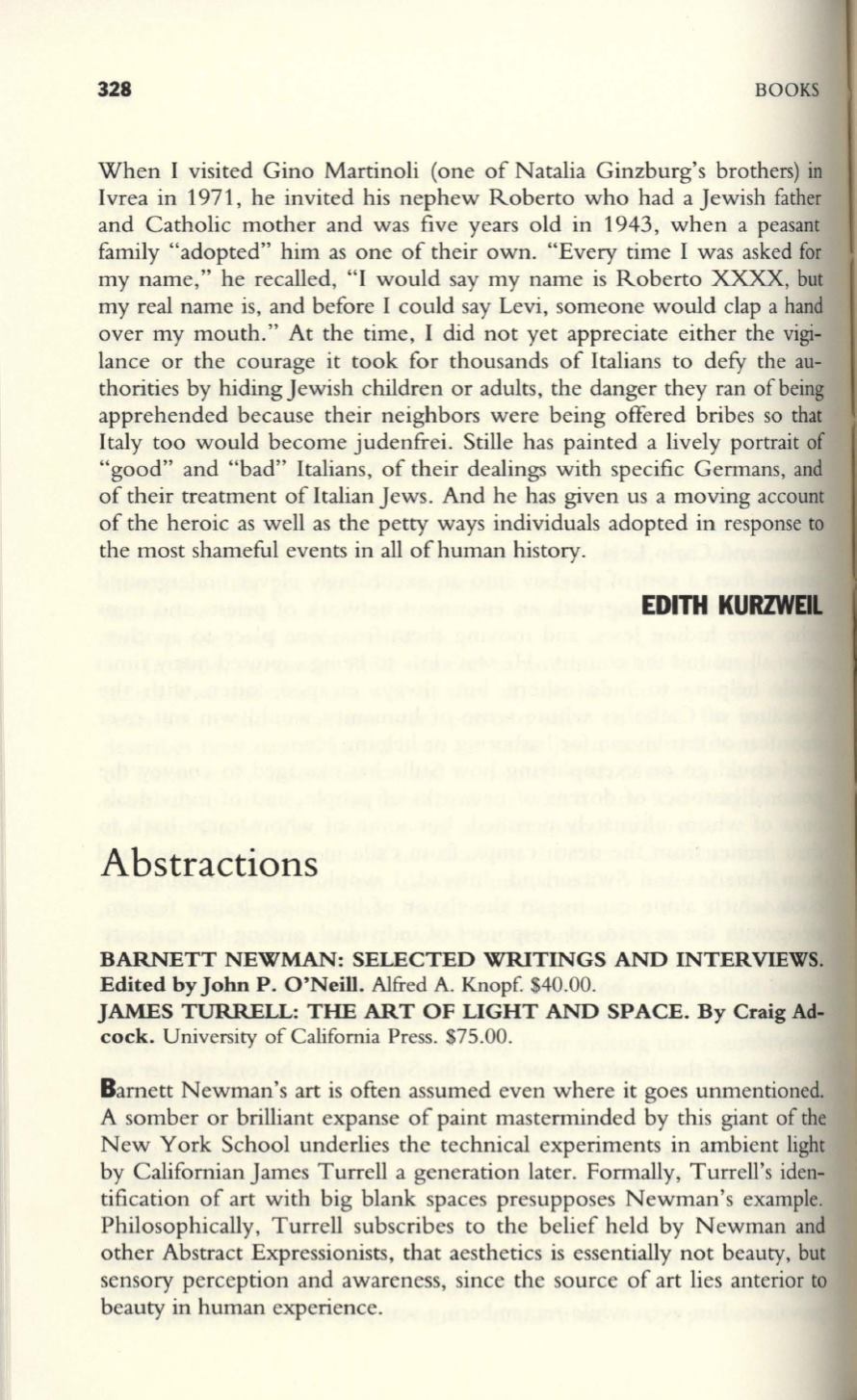
328
BOOKS
When I visited Gino Martinoli (one of Natalia Ginzburg's brothers) in
Ivrea in 1971, he invited his nephew Roberto who had a Jewish father
and Catholic mother and was five years old in 1943, when a peasant
family "adopted" him as one of their own. "Every time I was asked for
my name," he recalled, "I would say my name is Roberto XXXX, but
my real name is, and before I could say Levi, someone would clap a hand
over my mouth." At the time, I did not yet appreciate either the vigi–
lance or the courage it took for thousands of Italians to defy the au–
thorities by hiding Jewish children or adults, the danger they ran of being
apprehended because their neighbors were being offered bribes so that
Italy too would become judenfrei. Stille has painted a lively portrait of
"good" and "bad" Italians, of their dealings with specific Germans, and
of their treatment of Italian Jews. And he has given us a moving account
of the heroic as well as the petty ways individuals adopted in response to
the most shameful events in all of human history.
EDITH KURZWElL
Abstractions
BARNETT NEWMAN: SELECTED WRITINGS AND INTERVIEWS.
Edited
by
John P. O'Neill. Alfred
A.
Knopf $40.00.
JAMES TURRELL: THE ART OF LIGHT AND SPACE. By Craig
Ad–
cock. University of California Press. $75.00.
Barnett Newman's art is often assumed even where it goes unmentioned.
A somber or brilliant expanse of paint masterminded by this giant of the
New York School underlies the technical experiments in ambient light
by Californian James Turrell a generation later. Formally, Turrell's iden–
tification of art with big blank spaces presupposes Newman's example.
Philosophically, Turrell subscribes to the belief held by Newman and
other Abstract Expressionists, that aesthetics is essentially not beauty, but
sensory perception and awareness, since the source of art lies anterior to
beauty in human experience.


